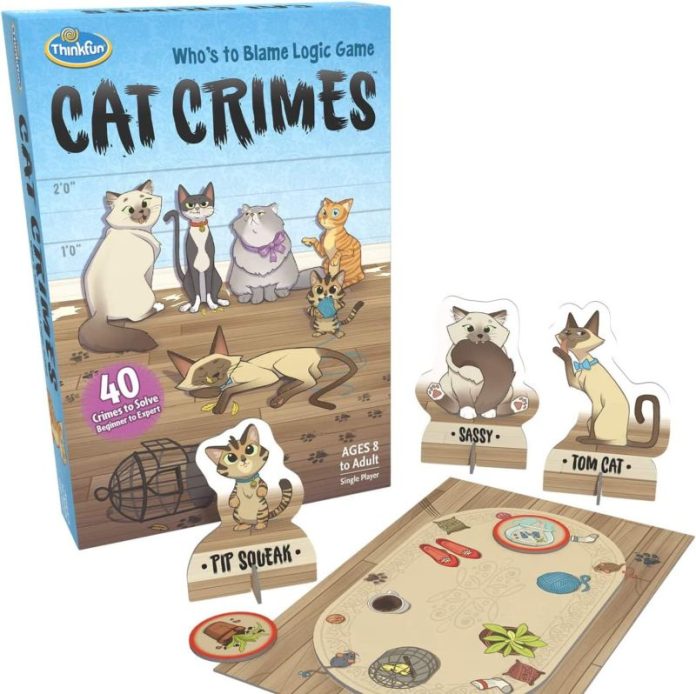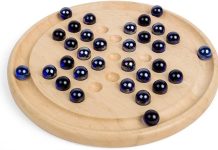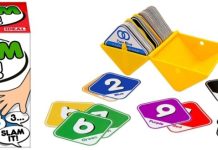In our house, we have regular family game nights and love to play a selection of board games and tabletop games. But sometimes you just have to sit down, relax and play a game just by yourself, one where you can put the old grey matter to use, that goes for the children as well as the adults. We do have several single player games on our game shelves, mostly in the form logic games and one of these games is Cat Crimes from ThinkFun – a kitty crime mystery, a moggy whodunnit, a feline felony!
Cat Crimes is a challenging who’s to blame logic game suitable for 1 player, ages 8 to adult. 6 cats, but which one has committed the crime. Can you use a clue card, logic and deduction to find the cat criminal and their moggy misdemeanour?
In the box:
- Game Board
- 6 Cat Tokens with Token Stands
- 6 Crime Tokens
- 40 Challenge Cards with Solutions
- Instruction Manual
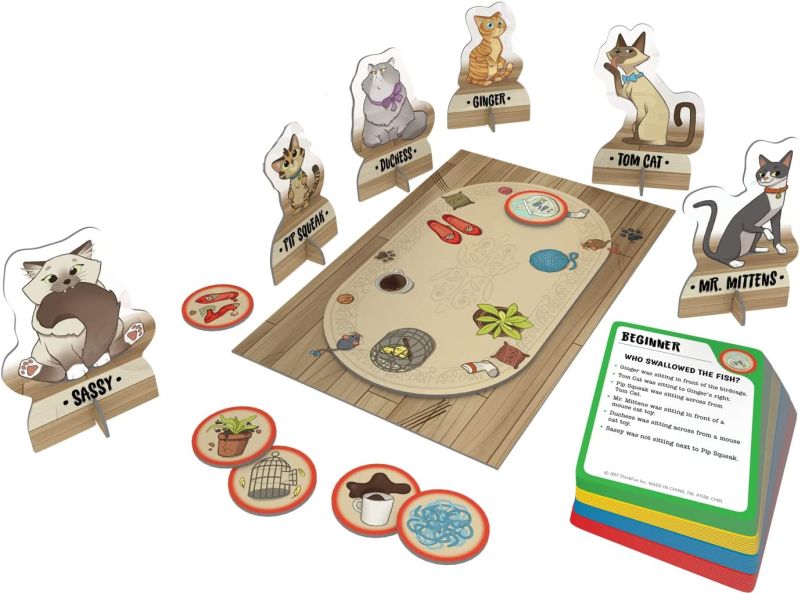
Meet Ginger, Mr. Mittens, Pip Squeak, Duchess, Sassy and Tom Cat, your neighbours six cats. You neighbour has asked you to look after them whilst they are away, but instead of a relaxing weekend of cat stroking and cat cuddles you repeatedly find spilled coffee, ruined shoes, an eaten bird, a swallowed fish, a broken flowerpot and unravelled balls of yarn. Now you job has changed from cat-sitter to detective to deduce what cat committed what dastardly crime using all available evidence on the clue card and the playing board.
Cat Crimes has 40 crimes to solve on the 40 challenge cards, a crime on each one with all the clues you need to solve the crime. There are 10 beginner cards (green), 10 intermediate cards (yellow), 10 advanced cards (blue) and 10 expert cards (red), suitable for children and adults.
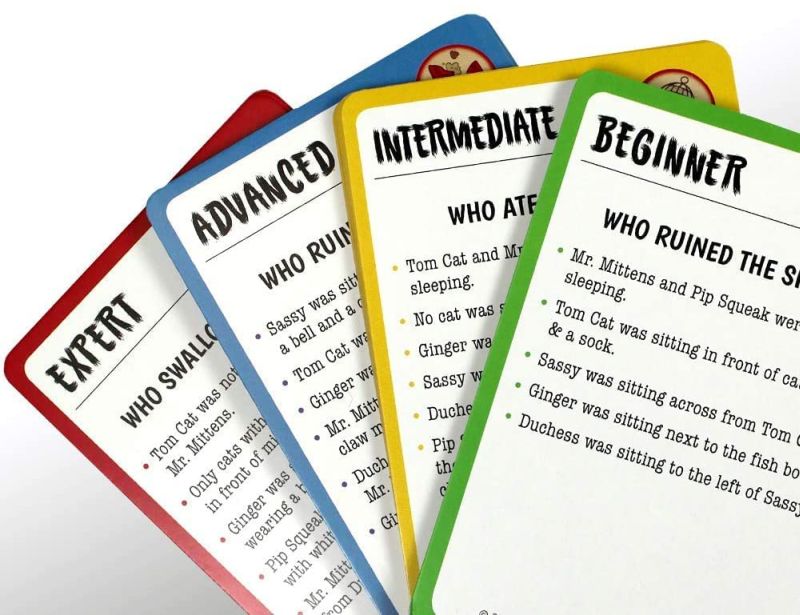
To play, you simply select a challenge card from the pack, they are numbered 1 to 40, just make sure that you choose the correct difficulty level. The card will explain what crime has been committed (has the crime token icon in top right corner). You then place the corresponding crime token on the game board (the game board looks like a table) and start deducing to find the furry criminal.
On the challenge card, it has a series of clues telling you if specific cats are upstairs asleep (and therefore not a suspect), who’s sitting next to who at the table, who’s opposite who and even things like a certain cat can’t sit next to a cat with a bell or can’t be sat near a mouse. Once you figure out clues and work out what cat is sitting where at the table (or not even at the table) you can place that cats corresponding cat token on the game board in position which helps you to visualise and slowly work out who the cat culprit is. Once you have gone through all the clues, sometimes several times, you should be able to work out what cat is in the wrong and you can check you answer on the rear of the challenge card.
I love the idea of having physical token pieces to place on the board to keep track of what cat is where helpful, it allows you to visualise possible solutions (without having to take notes to keep track) and it’s amazing how much this game allows you to test and develop critical thinking. The beginner levels start off really simple and are perfect for the younger age groups, but the skill level soon ramps up and requires a higher level of logical thinking, making the game an excellent challenge for kids and adults alike.
With 40 challenge cards and 10 cards for each level, as you progress through the crimes, analytical thought becomes more prevalent and having the pieces to move around the game board is very useful in testing out your hypotheses – you can move cats around to see how your answer would pan out.
Cat Crimes is described as a single player game and it is, but it is easily played as a team if one of the kids wanted to play, they could help by discussing possible solutions and working through the answers, explaining theories and reasoning for possible solutions. It is very interesting hearing how different people deduce different things from the same set of clues whilst giving a valid reason as to why they think that would work.
The beginner and intermediate levels are easy for adults but ease you into the game nicely if you want to work your way through all the challenges. The harder advanced and expert levels are more of a challenge for adults and do get your brain working. The beginner and intermediate levels are great for children and slowly ramp up the difficulty as they work through the cards.
Cat Crimes is an excellent logic game. Not only does it test deduction skills, but puts visual perception, reasoning, logical thinking and problem solving skills to the test whilst being lots of fun (at times, frustrating fun). If you play it with the kids, it is also an excellent way to encourage and develop communication and language skills as well.
The solutions to each cat crime are printed on the backs of the challenge cards. This enables you to easily check that you have got the answer correct or not and confirm the guilty feline but also the full seating plan, so you can see where you went wrong if you do accuse the wrong cat!
I love playing Cat Crimes. It is a top-quality game and I thoroughly enjoyed it. Whilst I would have preferred a more grown up looking game with people instead of cards and relevant human crimes, the skills needed are the same and the cats do appeal to the younger audience – a good way to get children interested and engaging in this type of game. If you love logic and puzzle games, then it is an easy game to recommend for hours of fun.
Rating: 5/5
RRP: £14.99
For more information, visit www.thinkfun.co.uk. Available to buy from Amazon here.
![]()


